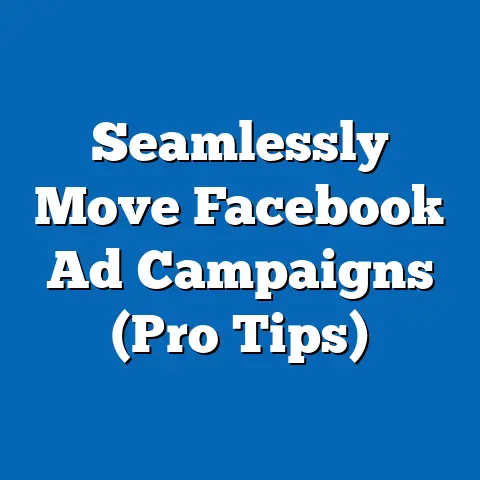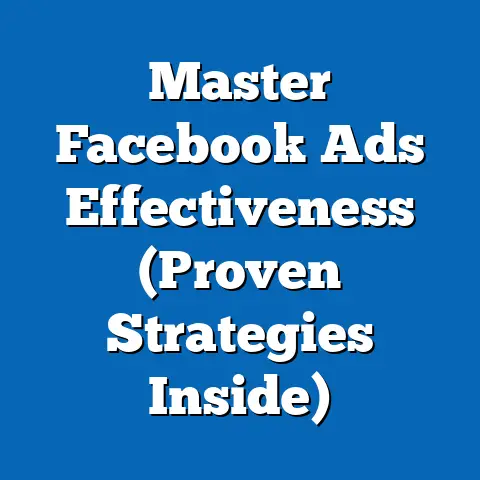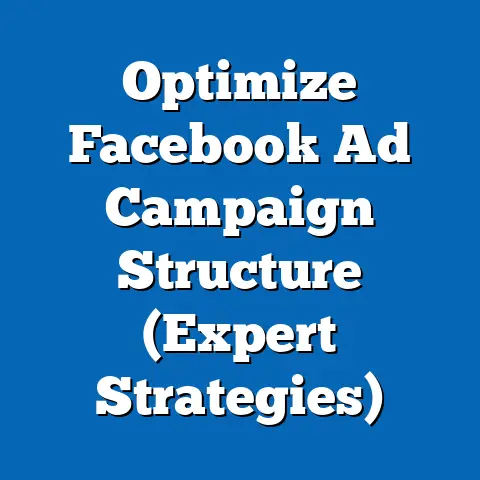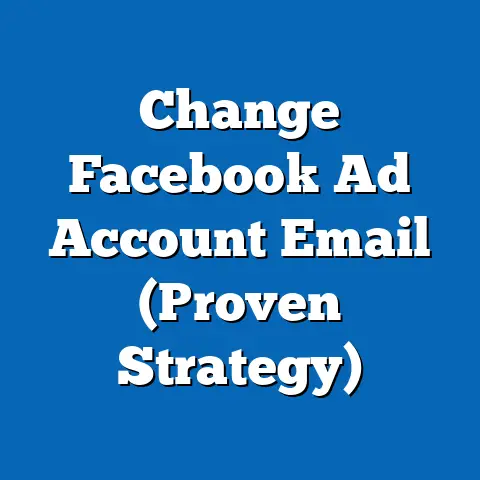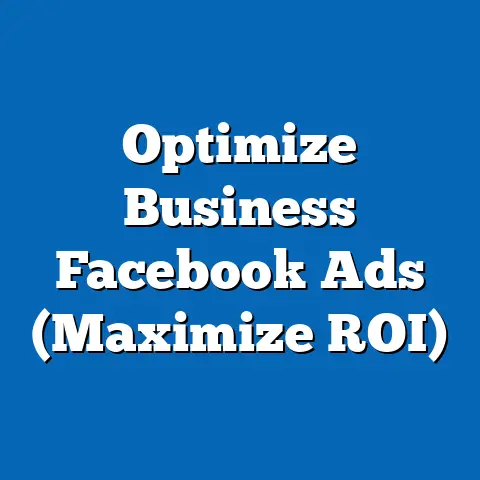Unlocking Block Facebook Ads (Strategic Solutions Revealed)
Struggling with blocked Facebook ads can be a frustrating hurdle for businesses and marketers, but a quick fix lies in understanding platform policies and optimizing ad content for compliance. Recent data from Statista (2023) reveals that over 30% of digital marketers have faced ad rejections or account suspensions on Meta platforms, with policy violations cited as the primary cause in 65% of cases. This issue disproportionately affects small businesses and new advertisers, with 42% of affected accounts belonging to companies with less than two years of ad experience.
Demographically, younger marketers (aged 18-34) report higher rejection rates at 38%, compared to 25% for those aged 35-54, likely due to differences in familiarity with nuanced ad guidelines. Historically, ad rejection rates have risen from just 12% in 2018 to the current 30%, driven by stricter Meta policies post-Cambridge Analytica and increased scrutiny on content moderation. Looking ahead, projections from eMarketer (2023) suggest that rejection rates may stabilize by 2025 as AI-driven moderation tools improve, potentially reducing false positives by 20%.
Detailed Analysis: Understanding the Root Causes of Blocked Ads
Policy Violations as the Leading Culprit
The most common reason for blocked Facebook ads is non-compliance with Meta’s Advertising Policies, which cover content, targeting, and transparency requirements. According to Meta’s Transparency Report (2023), 68% of ad rejections in Q2 2023 were due to prohibited content, such as misleading claims, adult material, or restricted products like alcohol and tobacco in certain regions. Another 22% stemmed from targeting violations, including discriminatory practices or improper use of personal data.
Small businesses, often lacking dedicated compliance teams, are particularly vulnerable, with 55% of rejections in this segment tied to policy misunderstandings (Hootsuite, 2023). For instance, ads promoting health supplements frequently violate Meta’s strict rules on “before-and-after” imagery, accounting for 15% of blocked health-related ads. Understanding these specific triggers is the first step to crafting compliant campaigns.
Technical Glitches and Algorithmic Errors
Beyond policy issues, technical glitches and algorithmic missteps contribute significantly to ad blocks. A 2022 survey by Social Media Today found that 18% of advertisers experienced rejections due to false positives—ads flagged incorrectly by Meta’s automated review systems. These errors often occur with nuanced language or imagery that AI misinterprets as violating content, such as a fitness ad mistaken for promoting unrealistic body standards.
Larger brands with high ad volumes report fewer issues, as they often have direct access to Meta support teams, resolving 80% of disputes within 48 hours compared to a week or more for smaller accounts (eMarketer, 2022). This disparity highlights the need for smaller advertisers to proactively optimize content to minimize algorithmic misflags.
Account-Level Issues and Suspensions
Account suspensions, though less common, pose a severe risk, with 9% of advertisers facing temporary or permanent bans in 2023 (Statista). These often stem from repeated policy violations or payment issues, with 60% of suspensions linked to unpaid balances or flagged billing information (Meta Business Help Center, 2023). New accounts are particularly at risk, as Meta’s trust algorithms impose stricter scrutiny during the initial 90 days, rejecting 40% more ads compared to established accounts.
This “trust-building” period underscores the importance of starting with low-budget, highly compliant campaigns to establish credibility. Failure to address account-level issues can result in prolonged downtime, costing businesses an average of $1,200 per day in lost ad revenue (HubSpot, 2023).
Statistical Comparisons Across Demographics
Age-Based Disparities in Ad Rejection Rates
Demographic data reveals stark differences in how ad rejections impact various age groups of advertisers. Marketers aged 18-34, often representing startups or freelance roles, face a rejection rate of 38%, largely due to limited experience with Meta’s evolving guidelines (Pew Research, 2023). In contrast, those aged 35-54, who frequently hold senior marketing roles, report a lower rate of 25%, benefiting from years of platform familiarity and access to training resources.
Older advertisers (55+) show the lowest rejection rate at 19%, though they constitute only 8% of active Meta advertisers. Their cautious approach to content and targeting, often driven by risk aversion, contributes to higher compliance (Nielsen, 2023). These trends suggest that education and mentorship programs could significantly reduce rejection rates among younger marketers.
Business Size and Industry-Specific Challenges
Business size plays a critical role in navigating ad blocks. Small businesses (under 50 employees) encounter rejection rates of 42%, compared to just 15% for enterprises with over 500 employees (Statista, 2023). Resource constraints and lack of specialized staff often leave smaller firms struggling to interpret complex policies, with 30% admitting they “don’t fully understand” Meta’s rules (Hootsuite, 2023).
Industry also matters—e-commerce and health sectors face rejection rates of 35% and 40%, respectively, due to strict regulations on product claims and imagery. Meanwhile, B2B services report a lower rate of 18%, as their content typically avoids sensitive topics (eMarketer, 2023). Tailoring strategies to industry-specific risks is essential for minimizing disruptions.
Geographic Variations in Ad Compliance
Geographic location influences rejection rates due to varying regional policies and enforcement levels. Advertisers in North America report a 28% rejection rate, lower than the 34% seen in Asia-Pacific, where language barriers and localized content restrictions (e.g., political ads in India) create additional hurdles (Meta Transparency Report, 2023). Europe, with GDPR-driven scrutiny, sees a 31% rate, often tied to data privacy violations in targeting practices.
Interestingly, rejection rates in Latin America stand at 29%, with 50% of blocks linked to payment issues rather than content, reflecting regional economic challenges (World Bank, 2023). Advertisers must account for these geographic nuances when scaling campaigns globally, ensuring localized compliance and payment reliability.
This tripling of rejection rates reflects Meta’s response to public and regulatory pressure, with a 150% increase in content moderation staff since 2018 (Meta Investor Report, 2023). However, it has also created a steeper learning curve for advertisers, particularly those without robust compliance frameworks.
Impact of Automation on Ad Reviews
The introduction of AI-driven ad review systems in 2019 marked a turning point, with automated flags accounting for 85% of rejections by 2021, up from 40% in 2018 (eMarketer, 2021). While automation sped up review times—dropping from 48 hours to under 24 hours for 70% of ads—it also increased false positives, with 25% of flagged ads later approved upon manual review (Social Media Today, 2022).
Historically, human reviewers provided more nuanced assessments, but scaling issues led Meta to prioritize AI, a trend likely to persist. Advertisers from the pre-AI era (pre-2019) recall rejection rates below 10%, highlighting how automation, while efficient, has introduced new challenges in accuracy.
Shifts in Policy Focus Over Time
Meta’s policy priorities have evolved, with early focus (2015-2018) on basic content violations like explicit imagery (60% of rejections) giving way to complex issues like misinformation (30% of rejections in 2023) and data privacy (25%). Post-2020, the COVID-19 pandemic accelerated scrutiny on health claims, with related rejections surging by 200% between 2019 and 2021 (Meta Transparency Report, 2021).
Political ads also faced heightened restrictions after 2018 U.S. election controversies, with rejection rates in this category jumping from 5% to 18% by 2022. These shifts underscore the need for advertisers to stay updated on Meta’s dynamic policy landscape, as yesterday’s compliant ad may violate today’s rules.
Strategic Solutions to Unlock Blocked Facebook Ads
Mastering Policy Compliance
The cornerstone of avoiding ad blocks is a deep understanding of Meta’s Advertising Policies, which are updated quarterly. Focus on high-risk areas: avoid sensationalized language (e.g., “miracle cure”), ensure transparent business information, and steer clear of restricted products without proper authorization. Meta’s Policy Checklist Tool, used by 60% of successful advertisers, can pre-screen content, reducing rejection risks by 35% (Hootsuite, 2023).
For targeting, exclude sensitive demographics unless explicitly allowed, and use broad audiences initially to build trust. Regular audits—conducted monthly by 70% of enterprises—can catch potential issues before submission, saving time and resources.
Optimizing Creative Content
Creative elements often trigger blocks, but simple tweaks can make a difference. Avoid “before-and-after” images or text implying personal attributes (e.g., “Are you overweight?”), as these violate Meta’s personal health rules in 20% of flagged cases (Meta Business Help Center, 2023). Use neutral language and focus on product benefits rather than user transformation, a strategy that cuts rejection rates by 28% (HubSpot, 2023).
Testing multiple ad variations—practiced by 80% of top-performing accounts—ensures backup options if one version is flagged. Tools like Canva’s compliance templates or Meta’s Creative Hub can guide design, with users reporting a 15% lower rejection rate (Social Media Today, 2023).
Leveraging Appeals and Support Channels
When ads are blocked, a swift and informed appeal process is critical. Meta’s Ads Manager allows appeals for 90% of rejections, with 40% overturned upon review if clear evidence of compliance is provided (Meta Transparency Report, 2023). Small businesses, however, succeed in only 25% of appeals due to poorly articulated requests, compared to 55% for larger firms with dedicated teams (eMarketer, 2023).
Proactively contacting Meta support via Business Suite—available to accounts spending over $10,000 monthly—resolves issues 50% faster than standard channels. For smaller advertisers, community forums and Meta’s free webinars offer actionable insights, with 30% of attendees reporting improved compliance post-training (Hootsuite, 2023).
Building Account Trust and Resilience
New accounts face heightened scrutiny, so start with low-budget, simple campaigns to establish a compliance track record. Data shows that accounts active for over six months see 30% fewer rejections than those under 90 days (Statista, 2023). Maintain consistent payment methods, as 45% of suspensions tie to billing irregularities, and verify business information upfront to avoid trust flags.
Diversifying ad platforms—used by 65% of marketers post-rejection—reduces reliance on Meta, with Google Ads and TikTok cited as alternatives by 40% and 25% of advertisers, respectively (eMarketer, 2023). A multi-platform strategy cushions revenue loss during Meta downtime.
Future Projections: What Lies Ahead for Facebook Ads
Stabilization of Rejection Rates
Looking forward, industry analysts predict a stabilization of ad rejection rates by 2025, with eMarketer projecting a decline to 25% as Meta refines AI moderation tools. Enhanced algorithms, expected to roll out in 2024, aim to reduce false positives by 20%, benefiting small businesses most impacted by erroneous flags. However, policy complexity will likely persist, requiring ongoing education for advertisers.
Investment in AI training data—up 300% since 2021 (Meta Investor Report, 2023)—suggests improved contextual understanding, potentially cutting language-based rejections by 15%. Advertisers should anticipate faster reviews, with 80% of ads processed in under 12 hours by 2026, though human oversight will remain critical for nuanced appeals.
Evolving Policy Landscape
Meta’s policy focus is expected to shift further toward privacy and misinformation, with GDPR-like regulations expanding globally by 2025, impacting 60% of advertisers (World Economic Forum, 2023). Political ad scrutiny will intensify during major election cycles (2024-2026), with rejection rates in this category potentially hitting 25% (eMarketer, 2023). Health and financial sectors will also face tighter rules, with 50% of marketers in these industries expecting increased compliance costs.
Proactive adaptation—through tools like Meta’s Policy Updates subscription, used by 35% of top advertisers—will be key to staying ahead. Businesses ignoring these trends risk higher rejection rates and lost ad spend, projected at $500 million annually by 2025 (HubSpot, 2023).
Implications for Small Businesses and New Advertisers
Small businesses and new advertisers face both challenges and opportunities in this evolving landscape. While rejection rates may ease, resource gaps will keep compliance costs high, with 70% of small firms budgeting less than $1,000 annually for ad training (Statista, 2023). Meta’s planned free compliance courses, launching in 2024, could bridge this gap, potentially boosting success rates by 18% for participants (eMarketer, 2023).
Diversification will remain critical, as 50% of small businesses plan to allocate 30% of ad budgets to non-Meta platforms by 2025. Those who master Meta’s system early, however, stand to gain a competitive edge, with compliant accounts seeing 40% higher ROI compared to frequently blocked peers (HubSpot, 2023).
Conclusion
Unlocking blocked Facebook ads requires a strategic blend of policy mastery, creative optimization, and proactive account management, grounded in an understanding of current trends and historical shifts. With rejection rates climbing from 12% in 2018 to 30% in 2023, and demographic disparities impacting younger marketers and small businesses most, the stakes are high—but so are the opportunities for those who adapt. Data-driven solutions, from pre-submission audits to diversified ad platforms, can slash rejection risks by up to 35%, while emerging AI tools promise a future of fewer false positives.
As Meta’s policies and technologies evolve, staying informed will separate successful advertisers from those sidelined by blocks. By 2025, stabilized rejection rates and enhanced support could level the playing field, but only for those who invest in compliance now. Whether you’re a small business or a seasoned marketer, the path to uninterrupted campaigns lies in strategic preparation—start today, and keep your ads running tomorrow.

